For countermeasures for aerodynamic stability of long-span bridges, we are conducting reevaluations with the purpose of improving maintainability.
Reevaluation of countermeasures for aerodynamic stability
To secure aerodynamic stability is an important topic for the design and construction of the long-span bridges of the Honshu-Shikoku Bridge Expressway. Therefore, numerous studies such as site surveys, wind tunnel tests, and numerical analysis were done, and various countermeasures for aerodynamic stability have been implemented. However, it is costly to maintain their functionality for a long term. Therefore, reevaluations of the countermeasures were done on several long-span bridges using the knowledge obtained during maintenance stages such as the vibration characteristics of actual bridges and wind characteristics at the site; through the revision of the countermeasures or their management methods, we are trying to reduce maintenance cost.
Revision of the maintenance cycle of the vibration control device of the Akashi-Kaikyo Bridge main tower
Because the main towers of the Akashi-Kaikyo Bridge are tall and flexible, it was anticipated that harmful vibrations due to wind would occur. As a way of suppressing these kinds of vibrations, numerous vibration control devices (dampers) are installed inside the main towers (TMD: 20 per tower) and the space between the main towers and girders (oil dampers: 4 per tower). These vibration control devices require periodic overhauls to maintain their required functionality, and it was anticipated that according to the frequency of overhauls, the maintenance cost would be extremely high. Therefore, we have performed reevaluations using data obtained after the opening of the bridge (the bridge’s vibration characteristics, the dampers’ vibration control performance, etc.). As a result, we found that it is possible to greatly prolong the time span between vibration control device overhaul cycles, enabling a large reduction in the cost required for maintenance.
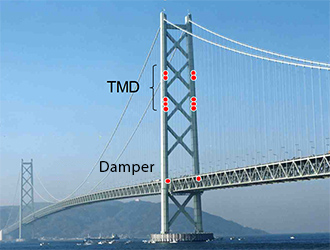
Vibration control devices of the Akashi-Kaikyo Bridge main tower
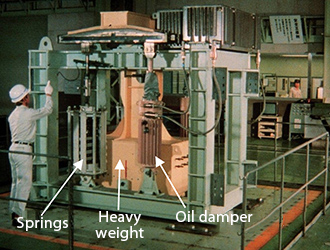
TMD
Removal of aerodynamic stabilization device of Tozaki viaduct
The Tozaki viaduct connects with the Onaruto bridge, to which the same high design wind speed applies. And because the viaduct is along the steep cape, many wind tunnel tests were conducted at the construction stage. As a result, double flaps and lower skirts were installed for vortex-induced vibration and galloping as aerodynamic stabilization devices, respectively. Because these members were exposed in a severe natural environment over long period, corrosion progressed substantially and replacement of the members became necessary. Consequently, in order to reduce maintenance costs, reevaluation of aerodynamic stability was carried out based on post-construction knowledge (bridge vibration properties and the local wind environment).
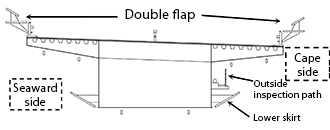
Cross section of Tozaki viaduct
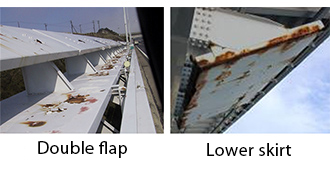
Corrosion of aerodynamic stabilization members
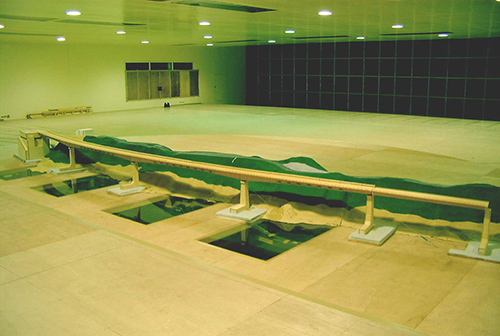
Full bridge wind tunnel test of Tozaki viaduct
Reevaluation of aerodynamic characteristics of Seto Ohashi suspension bridges
Three suspension bridges of the Seto Ohashi Bridges are highway-railway combined bridges. They have highway and railway on upper and lower decks of the stiffening truss girders respectively. To secure aerodynamic stability, open gratings are used at the center and both ends of the road deck. In maintenance, however, there are concerns that objects might fall through the gratings, so a closed structure is desirable.
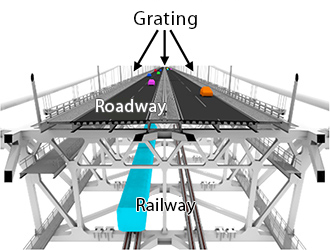
Cross section of Seto Ohashi bridge girders
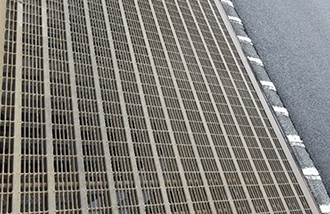
Open grating
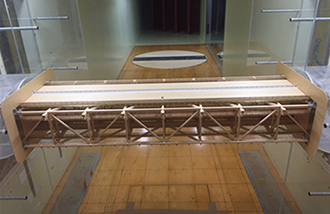
2-dimensional wind tunnel test
